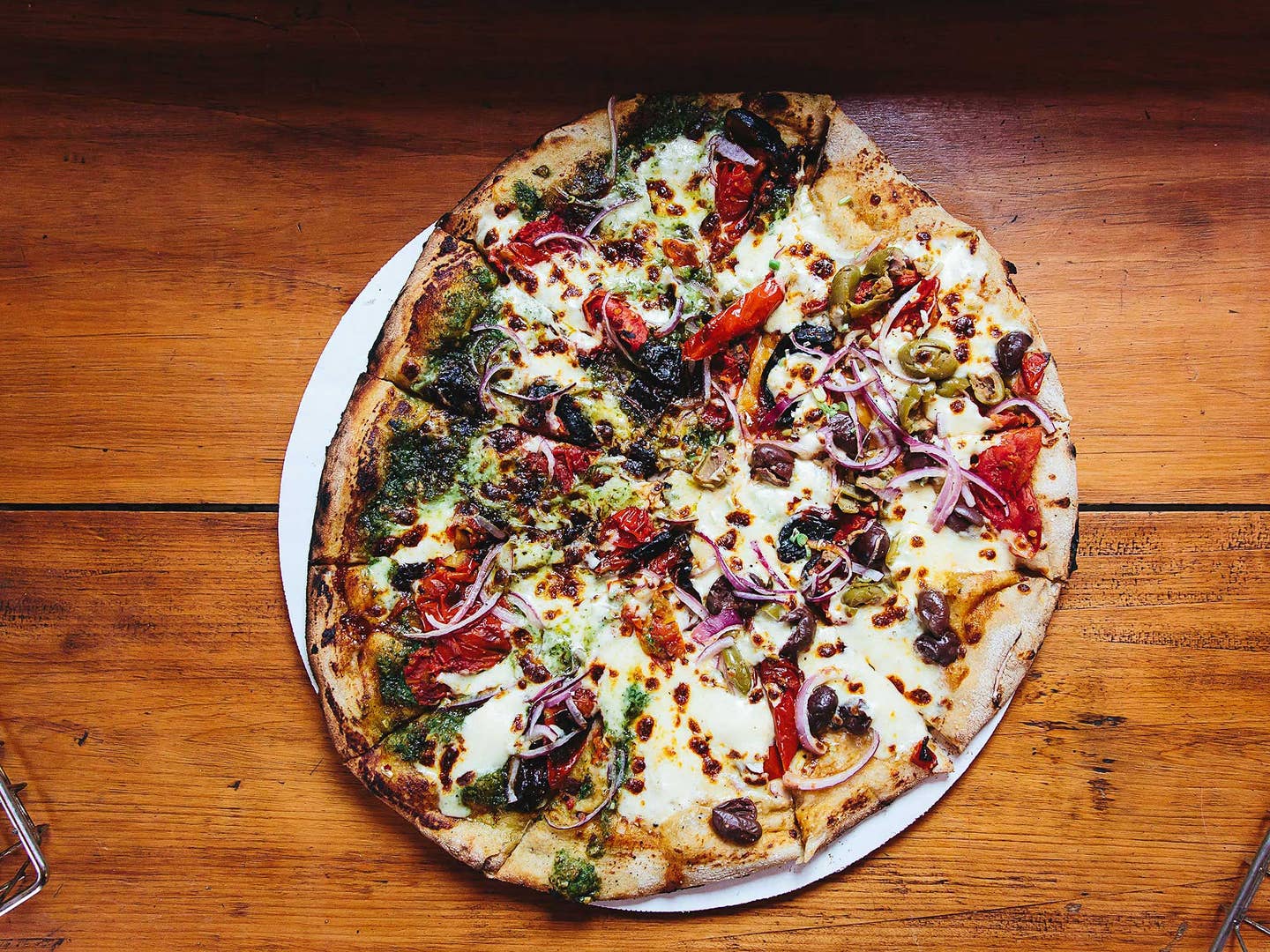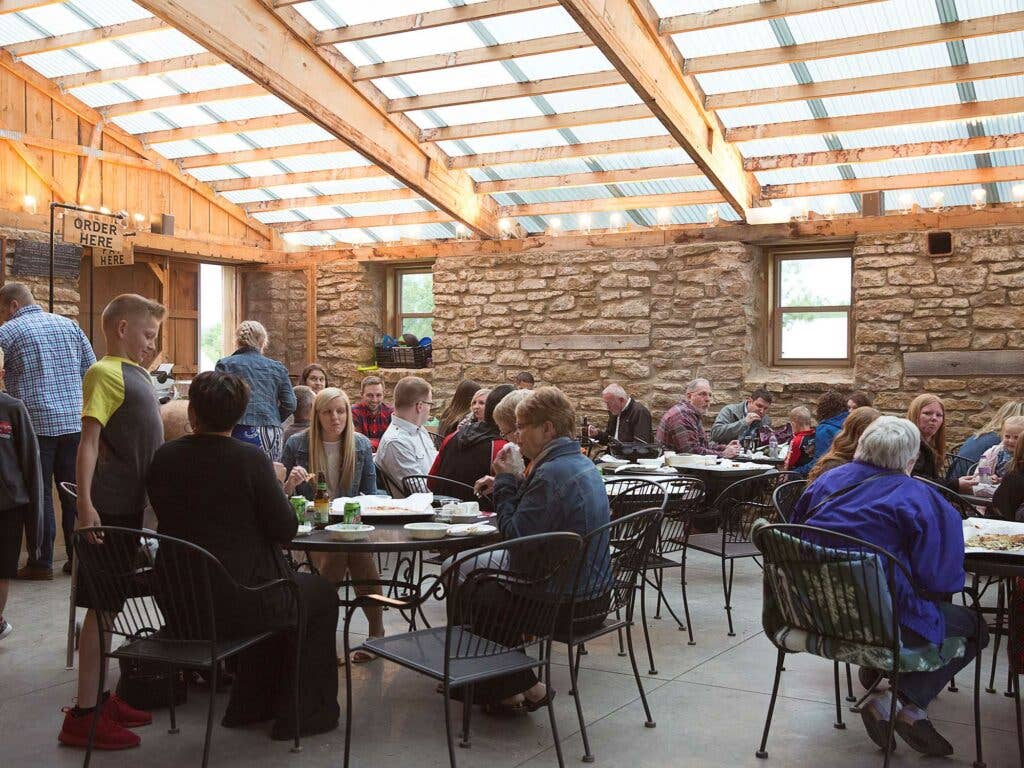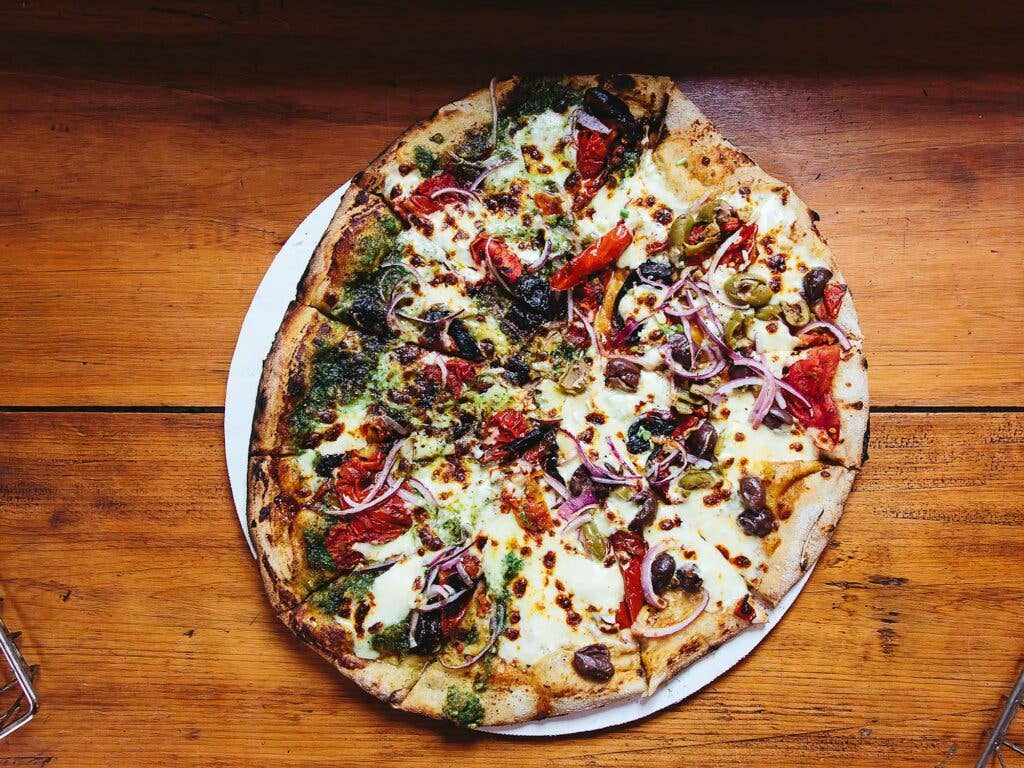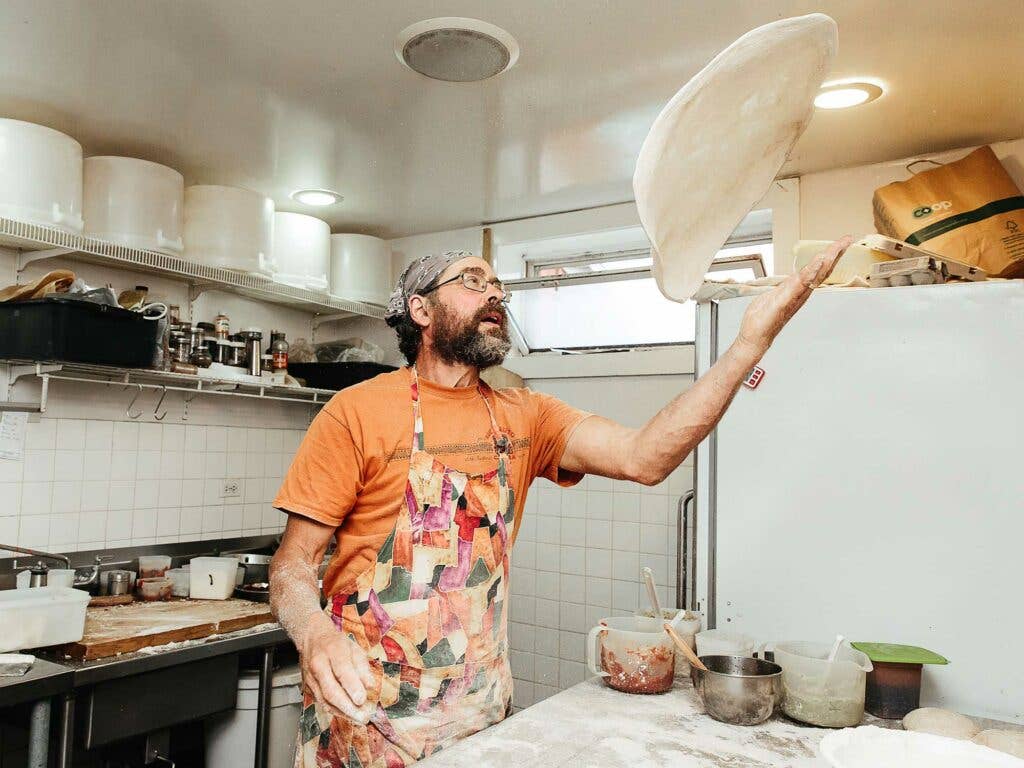
Can Pizza Night Save the Midwest’s Small Farms?
As Big Ag and international competition threaten rural Wisconsin’s lifeblood, a handful of entrepreneurs have taken a new approach: pizza farms
Have you been to a pizza farm? It sounds like the stuff of dreams: a place where rows of flowering vines unfurl to reveal the heartland’s annual pizza harvest. Pies ready to be plucked, stacked, and shipped to pizzerias across the country. “When it comes to pizza,” they’d say, “it’s always freshest at the source.” This is mostly still a dream. Except for the last part. Pizza farms are a uniquely Wisconsin thing, in which a small family farm opens the barn to host huge pizza-centric cookouts made with their freshest crops. The northern Midwest has no shortage of firewood, and even a small wood-fired pizza oven is a quick way to make a lot of hot meals. Plus, anyone with a kid or babysitting business knows that pizza is the key to getting a fussy family to eat their veggies. Pizza season starts around Memorial Day and runs into the mild October harvest, and visiting for a meal is one of the best ways to enjoy rural Wisconsin’s beautiful countryside. But for many small farms, the pizza side hustle isn’t just family fun: it’s a crucial way to survive in an increasingly hostile agriculture industry.

As farmers all over the country seek to increase profits by marketing directly to consumers, food service programs like pizza nights alleviate three of the biggest challenges to traditional community supported agriculture (or CSAs): perishability, irregular variety, and delivery. Rather than fighting the clock to get perishable products to the customer’s table, pizza nights bring the customer (and the table) right to the farm. Value is added to produce and meat through processing, and seasonality becomes more forgiving. That weird off-week when the farm has nothing but herbs? Time to pack the freezers with a season’s worth of pesto. Can’t convince the farmstand crowd to buy any more alliums? Caramelize the lot and put ‘em on a pie. And that bushel of perfectly ripe yet bruised tomatoes? Top notch pomodoro for days. Wisconsin’s dairy industry is thriving, but small family farms with a range of crops are disappearing or getting swallowed up by larger conglomerates. The trend was hastened in 2003 when the Wisconsin State Legislature passed Act 235, a bill that that limited the ability of local communities to oppose large livestock farms. Rick Barrett of The Milwaukee-Wisconsin Journal Sentinel cited the 2012 agricultural census when reporting that ‘the number of small farms in Wisconsin, 10 to 49 acres in size, fell to its lowest level in a decade,” under 18,000 from nearly 20,000. With U.S. food prices in steady decline, little guys face ever greater challenges to compete with domestic supply chain machines and competition abroad. For farmers resisting the pressure to specialize or sell out to massive agribusinesses, pizza farming is a novel lifeblood: an opportunity to add value and shelf life to their perishable crops. Heather Seacrist, who owns Suncrest Gardens, has almost completely weaned her farm off dependance on CSAs and sales of raw goods at the farmers’ market, saving her from reliance on direct but unstable distribution strategies.

“Value-added products have shown to be the most profitable for our farm,” Seacrist explains. Not just because people pay more for pizza than potatoes, but also because the former helps build a brand. “By running our farm's produce through our kitchen, we can create...ready-to-eat foods that maintain a local connection to a farm.”
When Seacrist started the farm with her family in 2003, a CSA was a core part of the business plan. But since converting to the pizza business, she's found even more ways to create value out of her produce—while cutting down on food waste. Americans waste $160 billion a year on cosmetically imperfect fruits and vegetables, but that's no trouble for a pizza farm.

“Having a licensed kitchen on site is a great way to capture all the produce that we grow here,” Seacrist explains. “We can trim tomatoes with a spot on them and make salsa, tomato soup, roasted spaghetti sauce, et cetera.” She still heads to the farmer’s market, but apart from a bit of frozen meat, she no longer sells raw ingredients. She and her kitchen team turn the farm’s produce into pizzas, desserts, frozen dips, soups, and salsas that pull in a much higher profit than fresh produce ever could. And at their most vertically integrated, pizza farms can be almost completely self-sustaining, growing their own firewood, grain, produce, even some meat.
But why Wisconsin? What is it about America’s Dairyland that makes it so perfect for pizza farming? While there are some pizza farms in Minnesota, and Iowa, Seacrist notes that Wisconsin's zoning laws are particularly friendly to farmers looking to adapt their land to include a food service operation. This was startlingly evident the moment I opened a door in the grand, newly built dining barn to reveal a cageless and cozy, if rather pungent hatchery, filled with excitable fluffy chicks.
Seacrist credits husband and wife team Ted Fisher and Robbi Bannen of A to Z Produce and Bakery as the inspiration for her own pizza program. She's not alone; many consider the couple to be the parents of Wisconsin's pizza farm movement.

Robbi Bannen and Ted Fisher were already baking and selling bread on their farm when they started a weekly pizza night in 1998. Bannen admits they were inspired by a woman they met on an Iowa farm selling pizzas out of her home kitchen; still, despite never planning to start that way, A to Z is generally credited as the first true pizza farm. Unlike Suncrest, A to Z still has a thriving CSA program, and still sells crusty loaves of sourdough and packs of sorghum granola to visitors on non-pizza nights. Pizza night is limited to pies and local beer and cider, as well as a few nice bottles of picnic wine. The couple’s connection to their home and customers is dear, and they see bread and pizza as extensions of the CSA, not a replacement. Bannen is skittish about attracting extra attention to their pizza night; the dinners already attract hundreds of people on warm summer nights, and she has little interest in scaling up the business.
Some Damn Good Pies
Wisconsin’s farm pizzaiolos show off some serious skill. Clockwise, from top left: A pepperoni pie from Sun Crest; cilantro pesto from A to Z; snap pea and sausage from Stone Barn; and asparagus and chive blossom from A to Z.
Wood-fired bread guru and owner of Cress Spring Bakery Jeff Ford hosts a seasonal pizza night as well. For all the pizza program's advantages, he is reticent at the suggestion that pizza nights are the key to sustaining a strong family farm, noting their dependence on good weather. "With the restaurant, it's very much boom or bust, and the difference between a good night and a bad night might be six or seven thousand dollars. It's easy to romanticize pizza on the farm, and it's pretty satisfying to see a few hundred people having a great time out on the lawn, having an experience that's hard to come by in the city. But I don't think it's an easy road to riches."
But for the entrepreneurial Wisconsinites who’ve worked it out, pizza farms are a novel way to keep traditional farm life relevant.
Bannen and Fisher’s youngest two children have moved away, but their eldest, Emmet, and his wife, Cella settled in the area. Emmet and Cella work at a nearby farm and still come back to help out with pizza nights. At the end of every service, Ted and Robbi sit down with their family and staff to enjoy pizza night for themselves, in a ritual that gets to the heart of what really makes these nights so special.
A Wisco Pizza Farm Tour
When locals and day trippers from the Twin Cities, Madison, and Milwaukee head far out into the country in search of a proper farm pie, these are some of the first stops they hit. Check in regularly with Last Night's Pizza Box for an up-to-date list of all the area's new farms.
At A to Z, visitors usually eat in the lawn, off of blankets or folding chairs, but on rainy nights, most folks bring their pizzas into "the coop". The enclosed dining area has been set up in the farm's repurposed 19th century chicken coop; the cozy structure has been scrubbed of the previous tenants and filled with tables and chairs.
The farm’s two ovens are fueled with wood from the property, and the dough is made with a mix of A to Z’ own stone-milled whole wheat and purchased organic white bread flour. The Neapolitan-style pies bake up crispy and lightly charred in places and the slack, hand-mixed pizza dough bubbles up through the cheese, giving each slice just the right range of crunch, cheese, and chew; in short, these two are pros.
Customers bring their own salads and desserts to supplement their meals and sharing between tables is common. When I visited A to Z on one of their first nights of the season, I ran into pizza farm blogger, Gina Montenaro. Montenaro hosts an online map of area pizza farms and makes a point of seeking out new farms in both Wisconsin and Minnesota, but she maintains that A to Z is still the gold standard and her personal favorite.
Marcy, Matt, and Amber Smith and Anne Magratten, owners of The Stone Barn, grow their own herbs in a wide raised bed set in the center of their outdoor dining space; when asked about where their cheese comes from, Marcy exclaims "from Wisconsin, of course!" Their large, rectangular pies have a distinctly California flair, with ingredients like barbecue chicken and feta, and their second massive barn is fully renovated for weddings and special events.
Heather Seacrist, whose husband runs a dairy farm 10 miles down the road from Suncrest Gardens, explains that “we source cheese made in Wisconsin that fits in with our taste preference, desire for local, and simple ingredient lists.”
Seacrist and her sons raise a few sheep and pigs; she uses their meat on pizzas and some of her flour and cornmeal is stone ground right across the road at Great River Organic Milling. Pizza nights at Suncrest Gardens Farm are like county fairs, complete with live music, bonfires, a small petting zoo, and her young son’s sno-cone stand. Come for the pizza and stock up on frozen dips, salsas, and sauces to take home.
Keep Reading
Continue to Next Story










